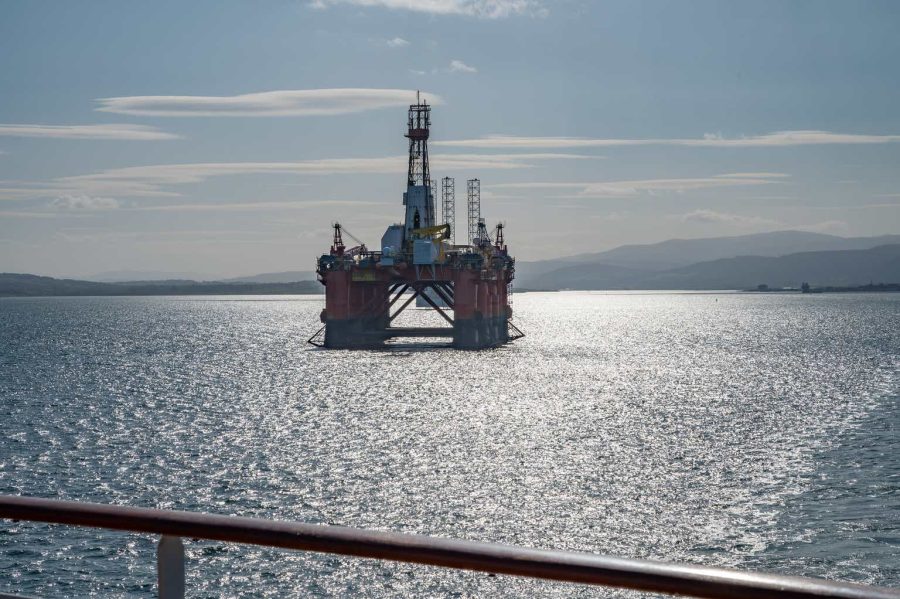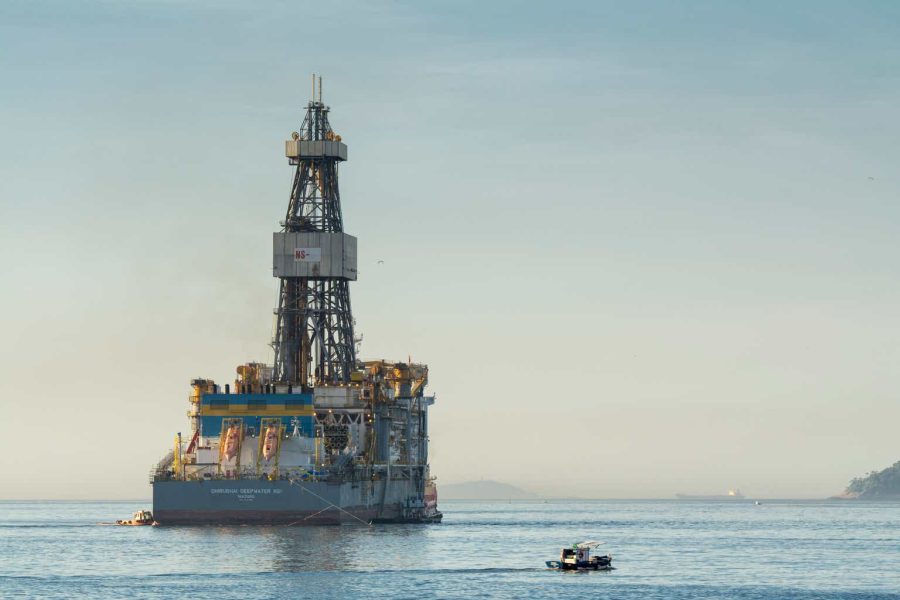July 14, 2024 This Week Top S&P 500 Gainers & Losers
Tesla Q2: The Bottom Is Likely In
Tesla: Time To Take Profits
Microsoft: The Q4 Results Should Surprise You
Tesla: Optimus And FSD Probably Won’t Save The Day
April 23, 2024 Maximizing Profits: When is the Right Time to Sell Your Business?
April 12, 2024 Improve Your Financial Status: A How-To Guide
April 12, 2024 How ZIM Integrated Container Tracking is Revolutionizing Global Trade
March 15, 2024 6 Best Growth Stocks To Buy Now According to Metatrader 5

Transocean (RIG) Stock Forecast for 2024–2028. Sell or Buy?
Updated: July 27, 2024 (02:50)
Sector: EnergyThe share price of Transocean Ltd. (RIG) now
50/200 Day Moving Average: $5.51 / $5.88
This figure corresponds to the Average Price over the previous 50/200 days. For Transocean stocks, the 50-day moving average is the support level today.
For Transocean stocks, the 200-day moving average is the resistance level today.
Are you interested in Transocean Ltd. stocks and want to buy them, or are they already in your portfolio? If yes, then on this page you will find useful information about the dynamics of the Transocean stock price in 2024, 2025, 2026, 2027, 2028. How much will one Transocean share be worth in 2024 - 2028?
When should I take profit in Transocean stock? When should I record a loss on Transocean stock? What are analysts' forecasts for Transocean stock? What is the future of Transocean stock? We forecast Transocean stock performance using neural networks based on historical data on Transocean stocks. Also, when forecasting, technical analysis tools are used, world geopolitical and news factors are taken into account.
Transocean stock prediction results are shown below and presented in the form of graphs, tables and text information, divided into time intervals. (Next month, 2024, 2025, 2026, 2027 and 2028) The final quotes of the instrument at the close of the previous trading day are a signal to adjust the forecasts for Transocean shares. This happens once a day.
Historical and forecast chart of Transocean stock
The chart below shows the historical price of Transocean stock and a prediction chart for the next month. For convenience, prices are divided by color. Forecast prices include: Optimistic Forecast, Pessimistic Forecast, and Weighted Average Best Forecast. Detailed values for the Transocean stock price can be found in the table below.
Long-term forecasts by years.

Critical Factors Influencing Transocean (RIG) Stock Movements

As investors closely follow Transocean (RIG) stock, a few key factors are poised to significantly influence its future performance. When forecasting the RIG stock price, analysts must consider these elements critically.
Key Influences on RIG Stock Rates
A paramount consideration is the company's elevated valuation relative to peers like Seadrill and Valaris, which might limit upside potential. Investors typically seek more attractive entry points with lower valuation metrics. This means Transocean's price-earnings and price-book ratios make it less appealing unless it substantially outperforms its competitors, a challenging feat.
Another critical factor is contract commencement delays. Delays with high-margin projects, such as those involving Deepwater Atlas, directly impact quarterly revenues—by approximately $20 million for Q2—affecting investor confidence and short-term stock performance.
While securing contracts with record-high dayrates is a positive signal, these agreements are often contingent and could lead to stock volatility if not materialized. Additionally, the declining backlog of $8.8 billion, down from $8.9 billion, suggests potential future revenue challenges.
- Recent dilution and debt issuance
- Disappointing quarterly results and guidance reductions
- Weaker fleet status reports
- Underperformance relative to peers
- Recurrent guidance reductions
These factors erode investor confidence, causing potential underperformance in RIG's stock price. Analysts can leverage these insights to make accurate Transocean stock forecasts by monitoring operational efficiencies, backlog trends, and quarterly financial health. Analysts should also keep a close eye on industry peer performance and investor sentiment shifts, which directly affect the RIG stock price prediction.
Understanding these dynamics can help determine whether RIG is a good stock to buy or sell. Using these factors, analysts can refine their financial models and provide a more accurate RIG stock price target, assisting investors in making informed decisions on the RIG stock buy or sell dilemma.
Ultimately, keeping an eye on these indicators will be essential for predicting Transocean's stock future.
Review the original Analysis

Transocean's RIG Stock: Key Influences and Forecasting Insights

Transocean's RIG stock is poised for potential growth amidst a mix of critical factors. Understanding these elements can help analysts make accurate RIG stock price predictions and forecast near-term movements. So, what events are likely to influence RIG stock rates?
Essential Influences on RIG Stock Rates
Firstly, the company's backlog is a paramount indicator of future revenue streams. The slight decline from $9.01 billion to $8.86 billion raises concerns, yet Transocean's push for new contracts and high spot rates paint a promising future. Analysts view a rising backlog as a sign of enhanced revenue potential, positively affecting the RIG stock forecast.
Equally important is Transocean’s financial performance. The 17.6% year-over-year revenue jump to $763 million, coupled with a shift from a net loss of $465 million to a $98 million gain, underscores solid financial health. Analysts often focus on robust revenue and EBITDA improvements to predict upward trends in RIG stock prices.
- Debt Management: Active debt management, including high-interest note buybacks and new lower-rate debt issuance, enhances long-term financial stability, positively impacting stock valuation.
- Industry Conditions: With offshore rig spot rates at a nine-year high and significant new contracts, the industry outlook is strong, boosting investor sentiment towards Transocean.
- Liquidity and Cash Management: Transocean’s $716 million cash reserve ensures financial flexibility and operational continuity, crucial for maintaining investor confidence.
By assessing these factors, analysts can form a comprehensive view to refine RIG stock forecasts. Predicting RIG stock price targets becomes a strategic exercise, considering the interplay between backlog growth, financial performance, debt management, industry conditions, and liquidity strength.
In essence, as these factors align favorably, Transocean’s RIG stock presents a promising investment opportunity. Analysts focusing on these indicators can provide a nuanced RIG stock buy or sell recommendation to investors.
Review the original Analysis

Navigating the Waters of RIG Stock: Predictions Amid Volatility

The future of Transocean's stock, affectionately known as RIG, is swayed by several critical factors, each interlocking in a delicate dance that could dictate the stock's trajectory. The primary influencers on the RIG stock forecast hinge on crude oil prices, contracting activity, and the ongoing saga of dilution and debt issues. These elements combined sketch the outline of RIG's potential market performance, offering analysts and investors alike a complex tapestry to unravel.
Decoding the Signals for RIG's Performance
At the forefront, crude oil prices play a pivotal role, their ebb and flow acting as a bellwether for RIG's stock price prediction. A downturn in crude prices dampens enthusiasm for offshore exploration and drilling, directly impacting Transocean's bottom line and, by extension, RIG stock prices. Analysts keen on making an accurate RIG stock forecast keep a close eye on oil market trends, gauging how shifts might influence exploration activities and demand for Transocean's fleet.
Furthermore, contracting activity—or the lack thereof—serves as a barometer for Transocean's financial health. A dwindling backlog signals concern, prompting reconsideration of the RIG stock price target by market watchers. Amidst this, the specter of dilution and debt looms, threatening to erode shareholder value and inject uncertainty into the RIG stock buy or sell decision-making process.
To cap it off, a savvy analyst will weave these factors into their predictive models, striving for the most accurate Transocean stock forecast possible. By monitoring the volatile crude oil market, scrutinizing contracting activity for signs of growth or stagnation, and calculating the impact of potential dilution and debt, an informed prediction on whether RIG is a good stock to buy wings its way to the surface, arming investors with the insights needed to navigate the turbulent waters ahead.
- Crude Oil Prices: The pivot upon which RIG stock prices teeter.
- Contracting Activity: A critical measure of Transocean's market vitality.
- Dilution and Debt: The twin threats to shareholder value.
In the end, while the future remains a tapestry of intertwining factors, peering into the RIG stock forecast reveals the intricate play of market dynamics, offering a glimpse into the challenges and opportunities that lie ahead for Transocean.
Review the original Analysis
Transocean Ltd. together with its subsidiaries provides contract drilling services for oil and gas wells around the world. It contracts with its drilling rigs, related equipment and work crews to drill oil and gas wells. As of February 22, 2021, the company owned or partially owned and operated a fleet of 37 mobile offshore drilling rigs, including 27 ultra-deepwater and 10 harsh environment floating vessels.
Transocean daily forecast for a month
| Date | Target | Pes. | Opt. | Vol., % |
|---|---|---|---|---|
| Jul 28 | 5.95 | 5.77 | 6.14 | 6.55 |
| Jul 29 | 5.92 | 5.86 | 6.03 | 2.83 |
| Jul 30 | 5.75 | 5.60 | 5.88 | 5.08 |
| Jul 31 | 5.56 | 5.41 | 5.65 | 4.37 |
| Aug 01 | 5.74 | 5.54 | 5.89 | 6.37 |
| Aug 02 | 5.84 | 5.65 | 5.93 | 5.02 |
| Aug 03 | 5.85 | 5.75 | 5.94 | 3.30 |
| Aug 04 | 5.80 | 5.67 | 5.88 | 3.73 |
| Aug 05 | 5.67 | 5.60 | 5.85 | 4.35 |
| Aug 06 | 5.67 | 5.60 | 5.85 | 4.41 |
| Aug 07 | 5.76 | 5.59 | 5.98 | 7.01 |
| Aug 08 | 5.97 | 5.90 | 6.19 | 4.86 |
| Aug 09 | 5.98 | 5.91 | 6.07 | 2.68 |
| Aug 10 | 6.04 | 5.82 | 6.12 | 5.18 |
| Aug 11 | 6.32 | 6.10 | 6.39 | 4.71 |
| Aug 12 | 6.50 | 6.39 | 6.62 | 3.56 |
| Aug 13 | 6.80 | 6.61 | 7.07 | 6.94 |
| Aug 14 | 7.04 | 6.85 | 7.29 | 6.37 |
| Aug 15 | 6.97 | 6.78 | 7.16 | 5.66 |
| Aug 16 | 7.11 | 6.93 | 7.27 | 4.98 |
| Aug 17 | 7.11 | 6.95 | 7.37 | 5.93 |
| Aug 18 | 6.93 | 6.83 | 7.05 | 3.19 |
| Aug 19 | 7.15 | 6.90 | 7.43 | 7.61 |
| Aug 20 | 7.22 | 7.13 | 7.46 | 4.66 |
| Aug 21 | 7.27 | 7.17 | 7.54 | 5.17 |
| Aug 22 | 7.41 | 7.31 | 7.60 | 3.90 |
| Aug 23 | 7.33 | 7.23 | 7.50 | 3.80 |
| Aug 24 | 7.51 | 7.40 | 7.73 | 4.46 |
| Aug 25 | 7.25 | 7.02 | 7.53 | 7.23 |
| Aug 26 | 7.31 | 7.18 | 7.53 | 4.99 |
Transocean Daily Price Targets
Transocean Stock Forecast 07-28-2024.
Forecast target price for 07-28-2024: $5.95.
Positive dynamics for Transocean shares will prevail with possible volatility of 6.147%.
Pessimistic target level: 5.77
Optimistic target level: 6.14
Transocean Stock Forecast 07-29-2024.
Forecast target price for 07-29-2024: $5.92.
Negative dynamics for Transocean shares will prevail with possible volatility of 2.751%.
Pessimistic target level: 5.86
Optimistic target level: 6.03
Transocean Stock Forecast 07-30-2024.
Forecast target price for 07-30-2024: $5.75.
Negative dynamics for Transocean shares will prevail with possible volatility of 4.834%.
Pessimistic target level: 5.60
Optimistic target level: 5.88
Transocean Stock Forecast 07-31-2024.
Forecast target price for 07-31-2024: $5.56.
Negative dynamics for Transocean shares will prevail with possible volatility of 4.185%.
Pessimistic target level: 5.41
Optimistic target level: 5.65
Transocean Stock Forecast 08-01-2024.
Forecast target price for 08-01-2024: $5.74.
Positive dynamics for Transocean shares will prevail with possible volatility of 5.988%.
Pessimistic target level: 5.54
Optimistic target level: 5.89
Transocean Stock Forecast 08-02-2024.
Forecast target price for 08-02-2024: $5.84.
Positive dynamics for Transocean shares will prevail with possible volatility of 4.776%.
Pessimistic target level: 5.65
Optimistic target level: 5.93
RIG (RIG) Monthly Stock Prediction for 2024
| Month | Target | Pes. | Opt. | Vol., % |
|---|---|---|---|---|
| Aug. | 6.25 | 5.44 | 7.08 | 23.14 |
| Sep. | 7.35 | 6.94 | 8.29 | 16.31 |
| Oct. | 7.57 | 6.36 | 8.71 | 26.96 |
| Nov. | 7.94 | 7.43 | 9.10 | 18.32 |
| Dec. | 7.65 | 6.72 | 8.83 | 23.92 |
Transocean forecast for this year
Transocean Stock Prediction for Aug 2024
An uptrend is forecast for this month with an optimal target price of $6.2524. Pessimistic: $5.44. Optimistic: $7.08
Transocean Stock Prediction for Sep 2024
An uptrend is forecast for this month with an optimal target price of $7.35282. Pessimistic: $6.94. Optimistic: $8.29
Transocean Stock Prediction for Oct 2024
An uptrend is forecast for this month with an optimal target price of $7.57341. Pessimistic: $6.36. Optimistic: $8.71
Transocean Stock Prediction for Nov 2024
An uptrend is forecast for this month with an optimal target price of $7.93693. Pessimistic: $7.43. Optimistic: $9.10
Transocean Stock Prediction for Dec 2024
An downtrend is forecast for this month with an optimal target price of $7.6512. Pessimistic: $6.72. Optimistic: $8.83
Transocean (RIG) Monthly Stock Prediction for 2025
| Month | Target | Pes. | Opt. | Vol., % |
|---|---|---|---|---|
| Jan | 8.48 | 7.65 | 9.27 | 17.55 |
| Feb | 8.70 | 7.60 | 9.43 | 19.37 |
| Mar | 8.66 | 7.83 | 9.41 | 16.76 |
| Apr | 8.54 | 8.00 | 8.90 | 10.17 |
| May | 8.22 | 7.49 | 9.24 | 18.86 |
| Jun | 7.17 | 6.85 | 8.03 | 14.64 |
| Jul | 5.88 | 5.16 | 6.28 | 17.79 |
| Aug | 5.70 | 4.98 | 6.57 | 24.13 |
| Sep | 6.24 | 5.74 | 6.75 | 14.97 |
| Oct | 6.37 | 5.93 | 6.96 | 14.84 |
| Nov | 6.17 | 5.84 | 6.72 | 13.21 |
| Dec | 6.80 | 5.90 | 7.10 | 16.86 |
Transocean (RIG) Monthly Stock Prediction for 2026
| Month | Target | Pes. | Opt. | Vol., % |
|---|---|---|---|---|
| Jan | 7.38 | 6.51 | 7.91 | 17.72 |
| Feb | 8.78 | 8.21 | 9.61 | 14.63 |
| Mar | 8.89 | 7.63 | 10.22 | 25.39 |
| Apr | 7.36 | 6.45 | 7.89 | 18.28 |
| May | 7.54 | 6.92 | 7.99 | 13.40 |
| Jun | 8.22 | 7.59 | 9.45 | 19.65 |
| Jul | 7.51 | 6.68 | 8.40 | 20.39 |
| Aug | 6.94 | 6.31 | 7.69 | 17.87 |
| Sep | 7.84 | 6.77 | 8.58 | 21.02 |
| Oct | 9.05 | 7.87 | 9.81 | 19.74 |
| Nov | 8.63 | 7.77 | 9.60 | 19.06 |
| Dec | 7.70 | 7.04 | 8.70 | 19.12 |
Transocean (RIG) Monthly Stock Prediction for 2027
| Month | Target | Pes. | Opt. | Vol., % |
|---|---|---|---|---|
| Jan | 6.39 | 5.38 | 7.40 | 27.29 |
| Feb | 6.29 | 5.94 | 6.73 | 11.78 |
| Mar | 7.55 | 6.93 | 7.89 | 12.24 |
| Apr | 8.72 | 7.92 | 9.49 | 16.54 |
| May | 10.22 | 8.61 | 11.00 | 21.75 |
| Jun | 10.37 | 9.25 | 11.26 | 17.86 |
| Jul | 12.03 | 11.04 | 13.78 | 19.90 |
| Aug | 11.91 | 10.83 | 13.29 | 18.46 |
| Sep | 11.86 | 10.93 | 13.09 | 16.49 |
| Oct | 14.02 | 12.78 | 15.95 | 19.86 |
| Nov | 14.89 | 14.26 | 16.49 | 13.54 |
| Dec | 12.92 | 11.89 | 14.76 | 19.44 |
Transocean (RIG) Monthly Stock Prediction for 2028
| Month | Target | Pes. | Opt. | Vol., % |
|---|---|---|---|---|
| Jan | 13.70 | 12.35 | 15.59 | 20.74 |
| Feb | 13.78 | 12.15 | 14.77 | 17.72 |
| Mar | 15.98 | 13.46 | 16.62 | 19.04 |
| Apr | 17.23 | 16.30 | 18.02 | 9.56 |
| May | 15.54 | 14.79 | 16.54 | 10.53 |
| Jun | 16.29 | 14.23 | 18.08 | 21.26 |
| Jul | 16.68 | 14.24 | 18.48 | 22.92 |
| Aug | 17.08 | 15.68 | 17.97 | 12.74 |
| Sep | 15.78 | 14.83 | 17.64 | 15.92 |
| Oct | 17.67 | 14.99 | 19.09 | 21.48 |
| Nov | 15.06 | 13.70 | 16.98 | 19.33 |
| Dec | 15.69 | 15.06 | 16.69 | 9.77 |
Transocean information and performance
TURMSTRASSE 30, STEINHAUSEN, CH
Market capitalization of the Transocean Ltd. is the total market value of all issued shares of a company. It is calculated by the formula multiplying the number of RIG shares in the company outstanding by the market price of one share.
EBITDA of Transocean is earnings before interest, income tax and depreciation of assets.
P/E ratio (price to earnings) - shows the ratio between the price of a share and the company's profit
Price/earnings to growth
Dividend Per Share is a financial indicator equal to the ratio of the company's net profit available for distribution to the annual average of ordinary shares.
Dividend yield is a ratio that shows how much a company pays in dividends each year at the stock price.
EPS shows how much of the net profit is accounted for by the common share.
Trailing P/E depends on what has already been done. It uses the current share price and divides it by the total earnings per share for the last 12 months.
Forward P/E uses projections of future earnings instead of final numbers.
Enterprise Value (EV) /Revenue
The EV / EBITDA ratio shows the ratio of the cost (EV) to its profit before tax, interest and amortization (EBITDA).
Number of issued ordinary shares
Number of freely tradable shares
Shares Short Prior Month - the number of shares in short positions in the last month.
Transocean (RIG) stock dividend
Transocean last paid dividends on 08/21/2015. The next scheduled payment will be on 09/23/2015. The amount of dividends is $None per share. If the date of the next dividend payment has not been updated, it means that the issuer has not yet announced the exact payment. As soon as information becomes available, we will immediately update the data. Bookmark our portal to stay updated.
Last Split Date: 01/01/1970
Splitting of shares is an increase in the number of securities of the issuing company circulating on the market due to a decrease in their value at constant capitalization.
For example, a 5: 1 ratio means that the value of one share will decrease 5 times, the total amount will increase 5 times. It is important to understand that this procedure does not change the capitalization of the company, as well as the total value of assets held in private hands.
















































